7.15.16 – (LAA/LUS) – JSIC Update
| APFA LAA Members | Subscribe to the APFA Hotline |
| APFA LUS Members | Subscribe to the APFA Hotline |
| Non-Members | Subscribe to the APFA Hotline |
| Press | Subscribe to APFA’s Press Release |
Friday, July 15, 2016
We hope you’re enjoying your summer. We’ve been working hard behind the scenes making progress towards some of the major milestones on the way to Full Operational Integration (FOI) – which is expected to occur in 2017. Much of our efforts have involved collaborating with our IT partners to ensure they have clear and concise direction regarding how to program the JCBA language.
We’re pleased that we’ve been able to implement things like numerous pay increases, 35 in 7 for Reserves, 100% pay and credit for deadheading, increases to premium pay, elimination of the sick cap and the ability to receive sick pay for all trips (assuming you have available sick time), enhancements to sick accrual (higher accrual rate and 1500 hour max for LAA), and the elimination of the threshold to maintain eligibility for company subsidized medical benefits.
In the months following the effective date of the JCBA, there was a flurry of implementation activity. Although you haven’t seen a steady flow of implemented items recently, the behind the scenes work we’re doing now involves items that require more robust preparation and lead time.
Where are we with pay protection?
In May we rolled out interim pay protection for legacy American flight attendants. While it’s very different from where we’ll ultimately end up with JCBA pay protection, it provides expanded protection in a variety of scenarios where you could potentially lose time as a result of a misconnection, illegality, or cancellation (MIC).
Getting to end state pay protection isn’t quite as simple as it might appear. Not only is there significant programming involved, but pay protection is tied to several components of the JCBA such as Hours of Service, International, etc. As IT completes their work to ensure things run smoothly from a systems perspective, we’re meeting with various departments like Crew Schedule, Crew Tracking, and Crew Compensation to make sure they’re fully prepared for the business process changes that pay protection will drive.
We’ll keep you posted as we get closer to implementing JCBA pay protection. Check out Section 10.J. through 10.M. if you’re interested in seeing where we’re headed.
Let’s talk LE (location delay incentive) pay
In response to some of the unintended consequences created by the “greater than twenty-four (24) hours” language, the second five hours of pay now kicks in at exactly 24 hours past the originally scheduled departure time (instead of 24 hours and one minute). Even if you end up departing a few minutes early, as long as the scheduled departure is 24 hours later, the additional 5 hours of LE pay would apply.
This change ensures that you’ll be paid a total of 10 hours of LE pay when a flight departing an IPD station is delayed exactly 24 hours.
Premiums for Purser, Lead, Galley, and Aft Lead now paid on “soft time” (LAA)
You might be thinking, this sounds great, but what’s “soft time”? Is there such a thing as “hard time”? Basically, “hard time” includes the block hours (gate to gate) in a trip sequence, while soft time includes things like duty and trip rigs. Before, you were paid premiums (e.g. Purser pay) on block hours on a leg by leg basis. Adding soft time into the mix may increase the amount of premium pay you get.
Let’s look at an example:

The trip above works 3:09 the first day, lays over for 30:46 and works 3:03 on day 2. While the block hours (hard time) totals 6:12, there is 5:04 in pay and credit/ “soft time” (F-time) so the sequence is actually worth a total of 11:16.
If you were working the Lead position on this trip, instead of getting $3.25/hour X 6:12, you’ll now be paid $3.25 X 11:16.
Are you a LUS flight attendant? Your premiums are already calculated this way.
Probationary flight attendant transfers (LAA)
In a previous update we announced that probationary flight attendants are eligible for either a vacancy or mutual transfer once (cumulatively) during probation.
Are you a foreign language speaker serving a lock-in? You’re also eligible to transfer effective with the September, 2016 bid month.
You may be eligible for a vacancy transfer award if you’re filling a foreign language vacancy at your desired (new) base. If you’re awarded a transfer, you’ll assume either the balance of the one year lock-in at your previous base or you’ll serve a six month lock-in at your new base – whichever is greater.
You may also be eligible for a mutual transfer. In a mutual transfer, Crew Planning matches you with another speaker and you’ll each assume the balance of the other’s lock-in period.
That’s it for this edition. We’ll be back soon with another update.
Until then,
Alin Boswell , PHL-based FA & JSIC member
Linda Haertling, DFW-based FA & JSIC member
Julie Hedrick, LAX-based FA & JSIC member
Keith McCarty, Flight Service/Labor Communications & JSIC member
John Petronzi, LUS Crew Schedule & JSIC member
Nick Riva/Thomas Wooten, LAA Crew Schedule & JSIC member







